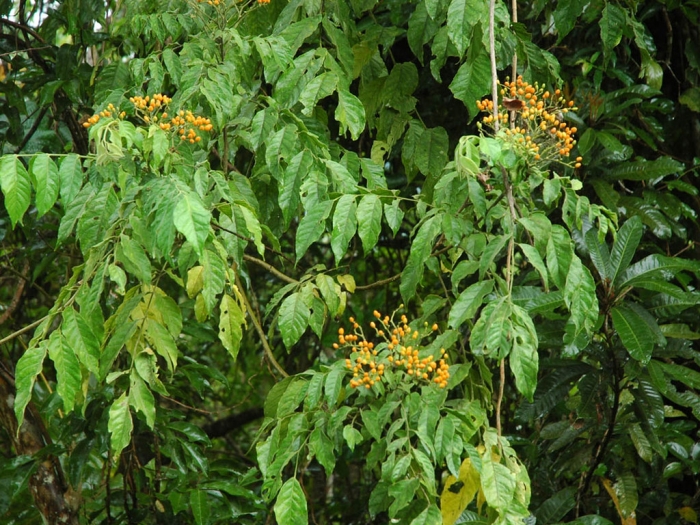Lime Berry
(Micromelum compressum)
Lime Berry (Micromelum compressum)
/
/

Edward Steven
CC BY-SA 2.0
Image By:
Edward Steven
Recorded By:
Copyright:
CC BY-SA 2.0
Copyright Notice:
Photo by: Edward Steven | License Type: CC BY-SA 2.0 | License URL: https://creativecommons.org/licenses/by/2.0/ | Uploader: Edward_Steven | Publisher: Flickr |




Estimated Native Range
Summary
Micromelum compressum, commonly known as Lime Berry, is a shrub or small tree native to the understory of tropical forests in Southeast Asia, particularly the Philippines. It typically grows to a height of 12-25 feet (4-8 meters) and a width of 6-14 feet (1.8-4.3 meters). The plant features a dense, rounded canopy with glossy, bright green leaves that provide a lush appearance throughout the year. Lime Berry produces clusters of fragrant, small flowers that are pink and white, blooming profusely in the spring and sporadically during winter, which are attractive to pollinators.
Lime Berry is valued for its ornamental flowers and compact size, making it suitable for use in tropical and subtropical gardens as a specimen plant or in mixed borders. It can also be grown as a potted plant in cooler climates. The plant prefers well-drained, fertile soils and requires regular watering, especially during dry periods. It thrives in full sun to part shade conditions, with partial shade being beneficial in areas with intense afternoon sun. While generally pest-free, it can be susceptible to scale insects and sooty mold. Lime Berry is not widely known for its fruit, but it does produce small, orange to red berries that are edible and have a tangy flavor, which can be used in local culinary dishes.CC BY-SA 4.0
Lime Berry is valued for its ornamental flowers and compact size, making it suitable for use in tropical and subtropical gardens as a specimen plant or in mixed borders. It can also be grown as a potted plant in cooler climates. The plant prefers well-drained, fertile soils and requires regular watering, especially during dry periods. It thrives in full sun to part shade conditions, with partial shade being beneficial in areas with intense afternoon sun. While generally pest-free, it can be susceptible to scale insects and sooty mold. Lime Berry is not widely known for its fruit, but it does produce small, orange to red berries that are edible and have a tangy flavor, which can be used in local culinary dishes.CC BY-SA 4.0
Plant Description
- Plant Type: Shrub, Tree
- Height: 12-25 feet
- Width: 6-14 feet
- Growth Rate: Slow
- Flower Color: Pink, White
- Flowering Season: Spring, Winter
- Leaf Retention: Deciduous
Growth Requirements
- Sun: Full Sun, Part Shade
- Water: Medium
- Drainage: Medium
Common Uses
Border Plant, Deer Resistant, Fragrant
Natural Habitat
native to the understory of tropical forests in Southeast Asia, particularly the Philippines
Other Names
Common Names: Tulibas
Scientific Names: , Micromelum compressum, Micromelum tephrocarpum, Bergera compressa,
GBIF Accepted Name: Micromelum compressum (Blanco) Merr.